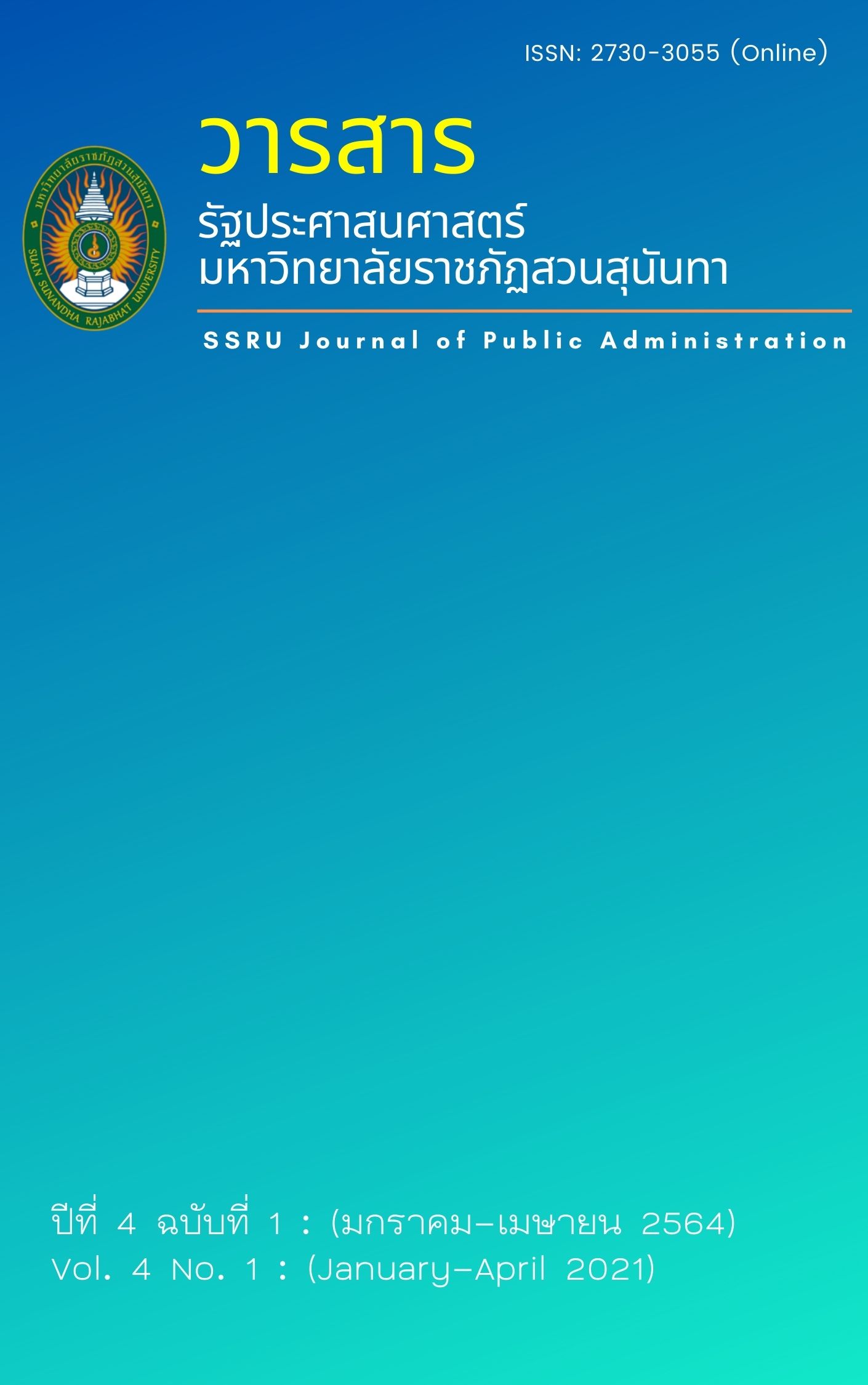ระบอบประชาธิปไตยกับการสร้างความปรองดอง
Main Article Content
บทคัดย่อ
บทความวิชาการนี้เป็นการนำเสนอการสร้างความปรองดองตามหลักการประชาธิปไตย ซึ่งเป็นการศึกษาความหมายของการสร้างความปรองดอง ความหมายของระบอบประชาธิปไตย หลักการของประชาธิปไตย องค์ประกอบของประชาธิปไตย ซึ่งได้แก่ การยึดหลักกฎหมาย การปฏิบัติตามเสียงข้างมาก และการมีส่วนร่วม ผลจากการศึกษาพบว่า การสร้างความปรองดองควรเริ่มที่ฝ่ายรัฐบาล ฝ่ายค้าน และทุกฝ่ายที่เกี่ยวข้อง โดยการสร้างบรรยากาศแห่งการปรองดองด้วยการไม่รวบรัด ใช้เสียงข้างมากเพื่อหาทางออก เปิดเวทีให้ทุกฝ่ายแลกเปลี่ยนความคิดเห็น สร้างความเป็นไปได้ในการสร้างความปรองดอง โดยอาศัยเวลาในการแก้ไข เยียวยาบาดแผลทางจิตใจรวมถึงเยียวยาความเสียหายแก่ผู้ได้รับผลกระทบทุกฝ่ายตามหลักมนุษยธรรม หลีกเลี่ยงการเผชิญหน้าหรือปะทะกัน ลดความเกลียดชัง ลดวาทกรรม ใช้เหตุผลโดยไร้อคติ ไม่เลือกปฏิบัติ สร้างความไว้วางใจ ปฏิบัติอย่างเปิดเผย ยุติธรรม ปล่อยวาง ฟื้นฟูและส่งเสริมความสัมพันธ์ระหว่างคู่ขัดแย้ง สื่อสารข้อเท็จจริง ทบทวนกระบวนการยุติธรรม ตระหนักถึงผลของความขัดแย้ง การปฏิรูปและกำกับบทบาทสื่อ ผลจากการวิจัยครั้งนี้ ฝ่ายรัฐบาล ฝ่ายค้าน พรรคการเมือง กลุ่มการเมืองทุกฝ่าย สื่อมวลชน และประชาชนที่มีส่วนเกี่ยวข้องกับความขัดแย้ง สามารถนำไปใช้สร้างความเข้าใจ สร้างความเชื่อถือและยึดมั่นต่อการปกครองระบอบประชาธิปไตยอันมีพระมหากษัตริย์ทรงเป็นประมุขที่ถูกต้อง
Article Details
เอกสารอ้างอิง
เกรียงศักดิ์ ราชโคตร์. (2552). การเมืองการปกครองของไทย. กรุงเทพฯ: สหธรรมิก.
กลุ่มงานบริการวิชาการ 3. (2557). การสร้างความปรองดอง: แสงสว่างส่องนำทางสังคมไทย. สืบค้นเมื่อ 1เมษายน 2564, จาก http://library2.parliament.go.th/ebook/content-issue/2557/hi2557-016.pdf
เฉลิมชัย กิติศักดิ์นาวิน. (2552). ความไว้วางใจในองค์การของประเทศไทย ศึกษาเปรียบเทียบองค์การภาครัฐ ภาครัฐวิสาหกิจ และภาคเอกชน (ดุษฎีนิพนธ์ปรัชญาดุษฎีบัณฑิต). สาขาวิชารัฐประศาสนศาสตร์ มหาวิทยาลัยรามคำแหง.
ชัยวัฒน์ สถาอานันท์. (2546). อาวุธมีชีวิต?: แนวคิดเชิงวิพากษ์ว่าด้วยความรุนแรง. กรุงเทพฯ: ฟ้าเดียวกัน.
ทินพันธุ์ นาคะตะ. (2516). ประชาธิปไตย: ความหมาย ปัจจัยเอื้ออำนวย และการสร้างจิตใจ.วารสารธรรมศาสตร์, 3(2), 9-12.
ประจักษ์ ก้องกีรติ. (2558). ประชาธิปไตยในยุคเปลี่ยนผ่าน. กรุงเทพฯ: ม.ป.ท.
ประหยัด หงส์ทองคำ. (2523). การปกครองท้องถิ่น (พิมพ์ครั้งที่ 2). กรุงเทพฯ: ไทยวัฒนาพานิช.
พรทิพย์ เกยุรานนท์. (2552). ความไว้วางใจนั้นสำคัญไฉน. สืบค้นเมื่อ 1 เมษายน 2564, จาก http://www.stou.ac.th/Schools/Shs/1_2552/Relax.htm
พิชาย รัตนดิลก ณ ภูเก็ต. (2558). วจนะแห่งความเกลียดชัง. สืบค้นเมื่อ 1 เมษายน 2564, จาก http://drphichai.blogspot.com/2015/06/blog-post_98.html
พิรงรอง รามสูต. (2556). การกำกับดูแลสื่อที่เผยแพร่เนื้อหาที่สร้างความเกลียดชัง. สืบค้นเมื่อ 1 เมษายน 2564, จาก https://thainetizen.org/2013/07/online-hate-speech-in-thailand-research-chula/
สุธาชัย ยิ้มประเสริฐ. (2555). สายธารประวัติศาสตร์ประชาธิปไตยไทย (พิมพ์ครั้งที่ 3). กรุงเทพฯ: มูลนิธิสายธารประชาธิปไตย.
อติเทพ ไชยสิทธิ. (2555). กระบวนการปรองดองจะเกิดขึ้นได้หรือไม่. สืบค้นเมื่อ 1 เมษายน 2564, จาก http://www.enlightened-jurists.com.
อรรถจักร สัตยานุรักษ์. (2555). ระบบของการปรองดอง. สืบค้นเมื่อ 1 เมษายน 2564, จาก http://digital _collect.lib.buu.ac.th/dcms/files/52930263/chapter5.pdf
Abu-Nimer, M. (2001). Reconciliation, Justice, and Consistence: Theory and Practice. Lanham, MD: Lexington Books.
Baumeister, R. X., & Exline, J. J. (2000). Expressing forgiveness and repentance: Benefits and barriers. New York: Guilford.
Black, D. (1972). Sociological Justice. Oxford: Oxford University.
Chaicharoenwattana, B., & Renumat, L. (2017). Peaceful Means: Conflict Management in accordance with peaceful means. Journal of Peace Studies, MCU, 5 (2), 1-16.
Cogco, T., & Masorn, C. (2018). Guidelines for solving Thai political violence. Journal of Mahachulalongkornrajavidyalaya Journal, 5 (1), 31-45.
Cook, J., & Wall, T. (1980). New work attitude measures of trust, organizational commitment and personal need non-fulfillment. Journal of Occupational Psychology, 53,(1), 39-52.
Dozier, R. W. (2003). Why We Hate: Understanding, curbing, and eliminating hate in ourselves and our world. New York: McGraw-Hill Book.
Enright, J. T. (1992). The remarkable saccades of asymmetrical vergence. Vision Research, 32,(12), 2261-2276.
Enright, R. D., & Coyle, C. T. (1998). Dimensions of forgiveness: Psychological research and theological perspectives. Philadephia: Templeton Foundation Press.
Fisher, J. W. (2000). Being human, becoming whole: Understanding spiritual health and well-being. Journal of Christian Education, 43(3), 37-52.
Flippo, E. B. (1966). Management: A behavioral approach. Boston, Mass: Allyn and Bacon.
Galtung, J. (1990). Cultural violence. Journal of Peace Research, 27(3), 291-305.
Geller, E. S. (1999). Interpersonal trust: What is it and how can it be increased. Retrieved February 11, 2021, from http://www.safetyperformance.com/interpersonaltrust-whatisitandhow canitbeincreased.pdf
Giddens, A. (1990). The Consequence of modernity. England: IJ.Press.
Keyuraphan, S. (2017). Integrated Buddhism in resolving current Thai political conflicts (Doctorate Thesis). Mahachulalongkornrajavidyalaya University.
Klanklamsuwan, W. (2014). The process of involvement with reconciliation For reform in the northeast region. Journal Ratchaphruek, 12(3), 10-16.
Lawler-Row, K. A., & Piferi, R. L. (2006). The Forgiving Personality Describing a Life Well Lived. Personality and Individual Differences, 41,(6), 1009-1020.
Lawshe, C. H. (1966). Principles of Personal Testing. New York: McGraw-Hill Book.
Mayer, C. R., Davis, H. J., & Schoorman, D. F. (1995, March). An Integrative Model of Organizational Trust Academy of Management. Science Direct, 20(3), 709-734.
McKnight, D. H., & Chervany, L. N. (2001). Conceptualizing trust: A Typology and e-commerce Customer Relationships Model. Ottawa: International Development Research Centre.
Moore, Christopher, W. (2003). The Mediation Process: Practical Strategies for Resolving Conflict (3rd ed.). CA: Jossey-Bass.
Morris, Catherine. (2004). Conflict analysis a tutorial. Retrieved February 11, 2021, from http://www.peacemakers.ca
Padover, S. K. (1963). Secret diplomacy; espionage and cryptography, 1500-1815. New York: F. Ungar Pub. Co.
Promphanjai, A. (2015). Thai government in the period of General Prem Tinsulanonda: The problem of half-democracy (1980 - 1988). Journal of Social Sciences, Faculty of Political Science. Chulalongkorn University, 45 (2), 75-104.
Reeder, R.H. (1973). Preferential transcription of Xenopus laevis ribosomal RNA in interspecies hybrids between Xenopus laevis and Xenopus mulleri. journal of molecular biology, 80(2), 217-228.
Reina, D. S., & Reina, M. L. (1999). Trust and Betrayal In the Workplace: Building Effective in Your Organization. San Francisco: Berrett Koehler.
Robinson, S. L. (1996). Trust and breach of the psychological contract. Administrative Science Quarterly, 41, (4), 574–599.
Rye, M. S., & Pargament, K. I. (2002). Forgiveness and romantic relationship in college: Can it heal the wounded heart?. Journal of Clinical Psychology, 58, (4),419-441.
Sripochangkun, S. (2015). Forgiveness and reconciliation. Journal of Public Administration and Politics, 4 (1), 1-29.
Sripochangkun, S. (2016). Reconciliation through customary systems and limitations Reconciliation justice: a case study of reconciliation under the Sears system Somalia. Journal of Political Science and Law Kalasin University, 5(1), 22-43.
Sriwittaya, S. (2015). Rule of law and reconciliation. Pathum Thani: Research Department, Rangsit University.
Thanasathit, U. (2013). studied the role of the Political Development Council and the promotion of national reconciliation. Bangkok: University of the Thai Chamber of Commerce.
Whitney, J. O. (1994). The trust factor: Liberating profits and restoring corporate vitality. New York: McGraw-Hill Book.


